687
Bay of Fundy and its tides
The Bay of Fundy is located on the Atlantic coast of North America, in the north-eastern part of the Gulf of Maine between the Canadian provinces Kew Brunswick and Nova Scotia. This Bay is known for the highest tides in the world. Due to the unique shape of the Gulf difference in water level between the tides can be as much as 14 meters. During each cycle, more than 100 billion tonnes of sea water flow and flows into the Bay of Fundy, which is more than the combined flow of all the fresh water rivers of the world. Every day, there came a tide and one low tide. Requires 6 hours and 13 minutes for the tide to turn in the tide, and 6 hours and 13 minutes, the water level has gone down from the high tide to low tide. This frequency gives every visitor a unique opportunity to see during the day as the tide and low tide, at any time of the year
13 ph via lifeglobe
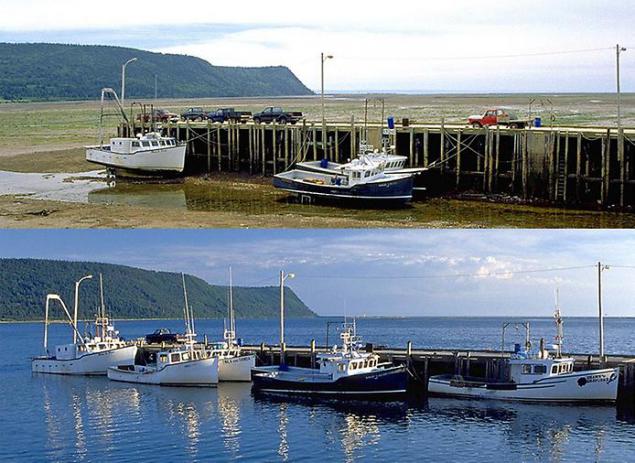
This unique ecosystem raises the nutrients from the ocean floor, providing an abundance of nutrients for fish, birds, whales and other ocean dwellers. At the regional economy and is based Fundy. Powerful streams created on the shores of the Gulf of amazing cliffs, exposing fossils, which were formed over 300 million years ago
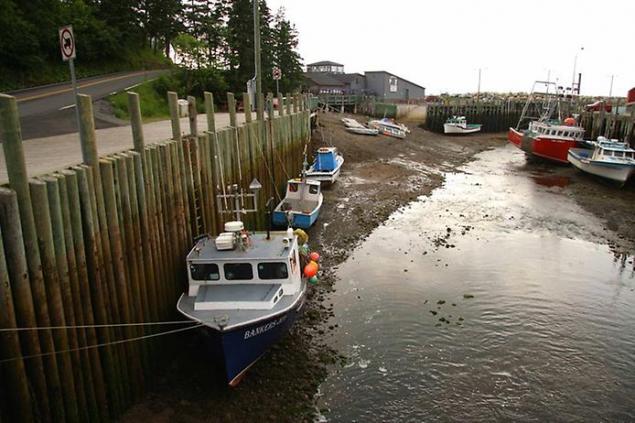
Why is the Bay of Fundy tides are the highest?
The average range of fluctuations of the global ocean is a maximum of 1 meter, so how in the Gulf may occur a difference of up to 16 meters? All is due to a special form of beaches in these areas and very large volumes of water
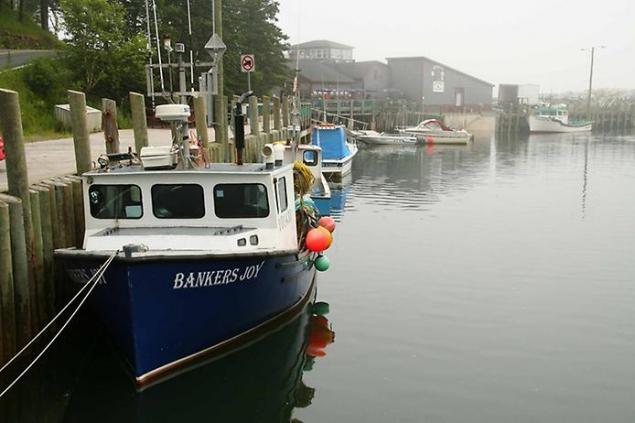
At the water in the basin of Fundy is the characteristic oscillation period, when set in motion rhythmically fluid will "slosh" back and forth in a certain period of time. In a small scale, you can imagine the bathroom with the water, where to bring the excitement of water and pour it over the side, need only seconds. In the Bay of Fundy, because of the enormous depth of the natural oscillation period of approximately 12-13 hours. This oscillation interval coincides with the tides of the Atlantic Ocean, which flows into the Gulf flock every 12 hours and 26 minutes
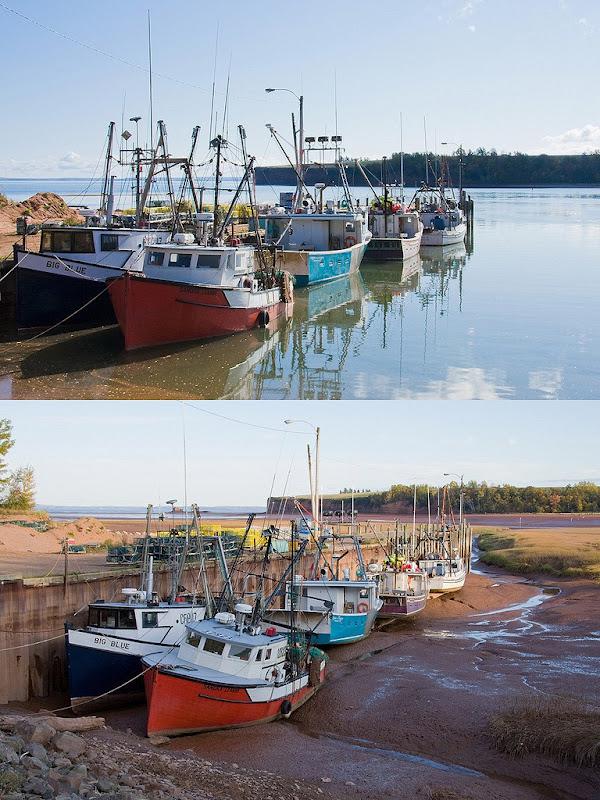
Imagine a man rhythmically swaying back and forth on the swing and each time it reaches a certain height. Now imagine that at some point there is someone who gives him additional acceleration, and together they reach a much greater height. So with the Fundy tides, the water moves back and forth in sync with the ocean currents

Secondary effects on the tides has the shape of the bay. It is formed as a large natural pipe in the upper part becomes smaller and narrower.
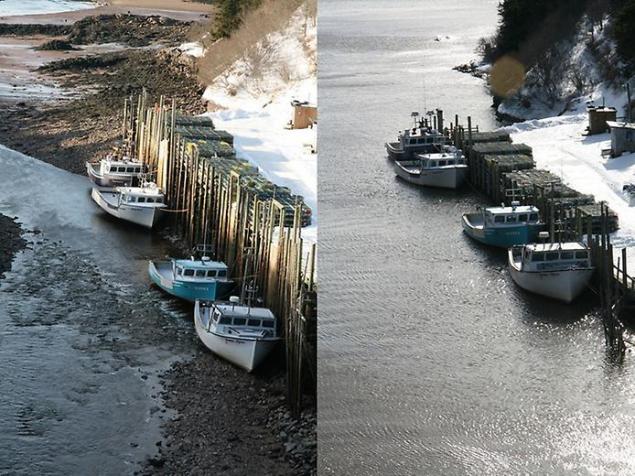
07
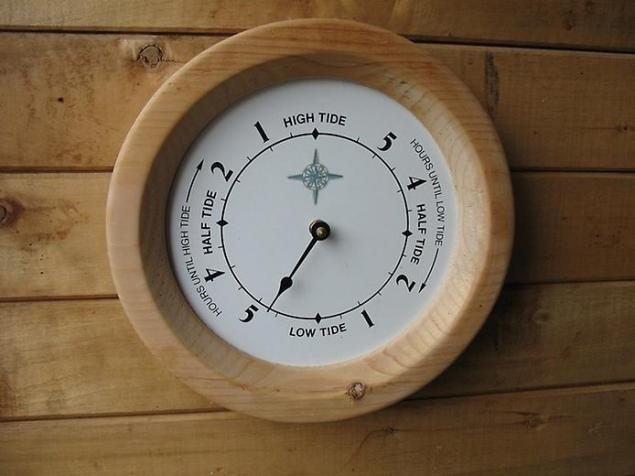
08
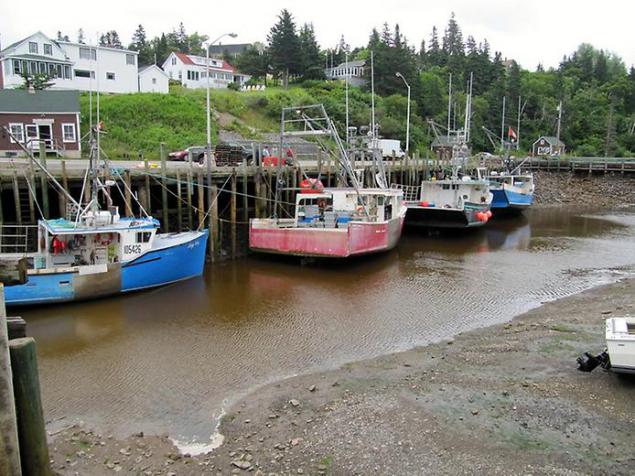
09
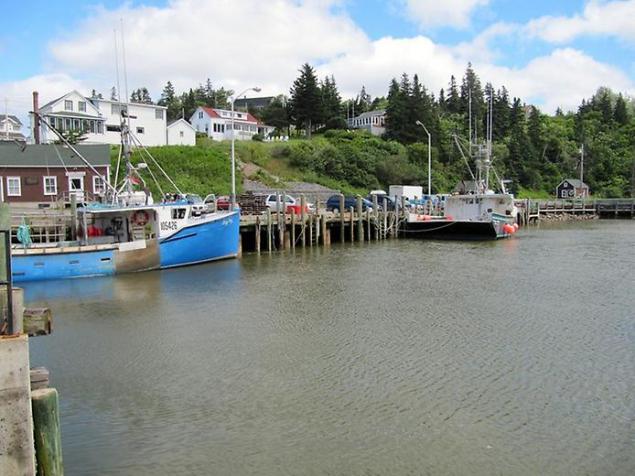
10

11
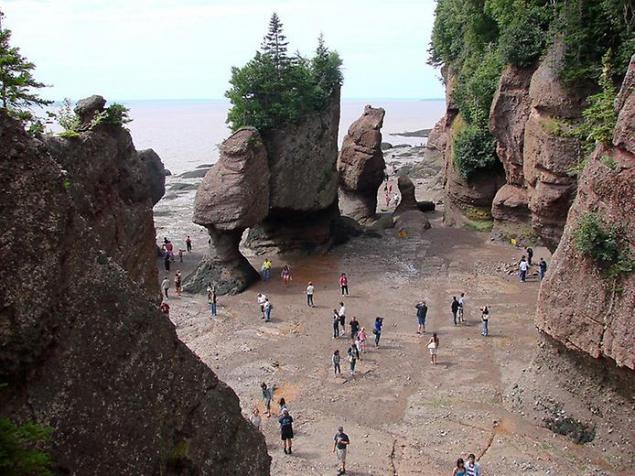
12
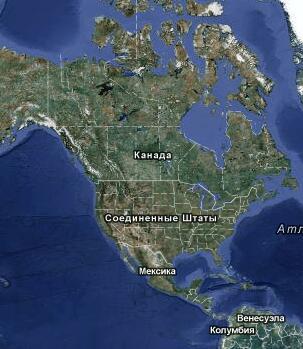
13
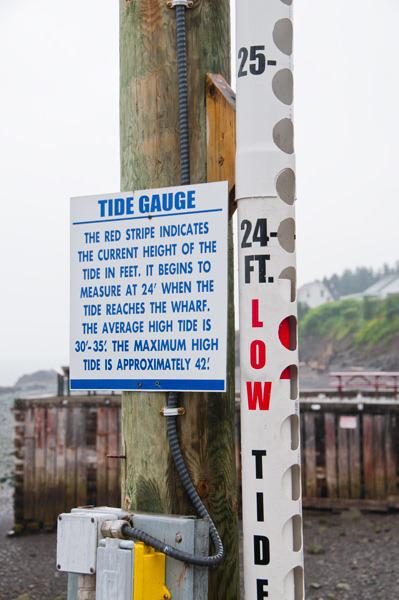
Source:
13 ph via lifeglobe

This unique ecosystem raises the nutrients from the ocean floor, providing an abundance of nutrients for fish, birds, whales and other ocean dwellers. At the regional economy and is based Fundy. Powerful streams created on the shores of the Gulf of amazing cliffs, exposing fossils, which were formed over 300 million years ago

Why is the Bay of Fundy tides are the highest?
The average range of fluctuations of the global ocean is a maximum of 1 meter, so how in the Gulf may occur a difference of up to 16 meters? All is due to a special form of beaches in these areas and very large volumes of water

At the water in the basin of Fundy is the characteristic oscillation period, when set in motion rhythmically fluid will "slosh" back and forth in a certain period of time. In a small scale, you can imagine the bathroom with the water, where to bring the excitement of water and pour it over the side, need only seconds. In the Bay of Fundy, because of the enormous depth of the natural oscillation period of approximately 12-13 hours. This oscillation interval coincides with the tides of the Atlantic Ocean, which flows into the Gulf flock every 12 hours and 26 minutes

Imagine a man rhythmically swaying back and forth on the swing and each time it reaches a certain height. Now imagine that at some point there is someone who gives him additional acceleration, and together they reach a much greater height. So with the Fundy tides, the water moves back and forth in sync with the ocean currents

Secondary effects on the tides has the shape of the bay. It is formed as a large natural pipe in the upper part becomes smaller and narrower.

07

08

09

10

11

12

13

Source:























